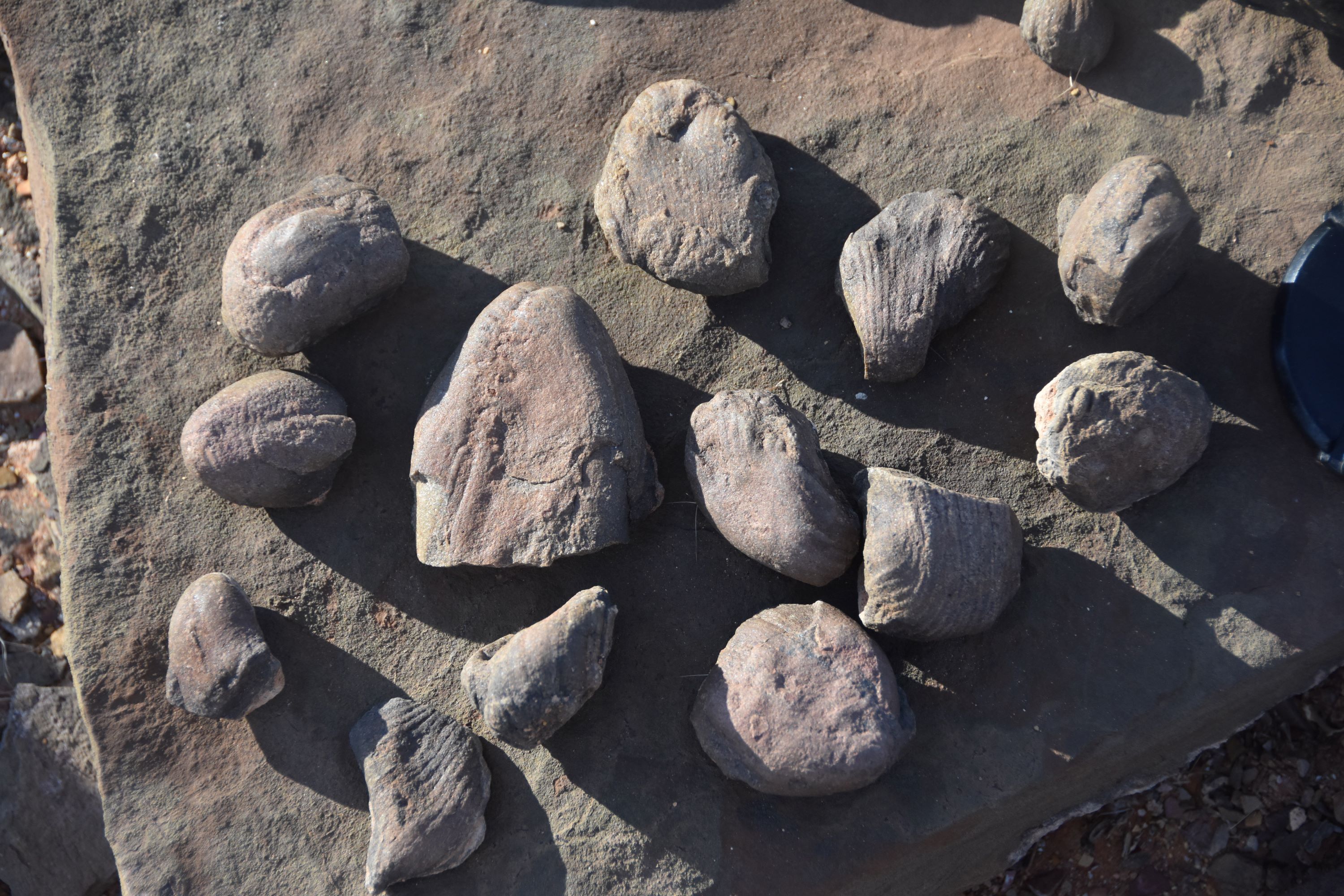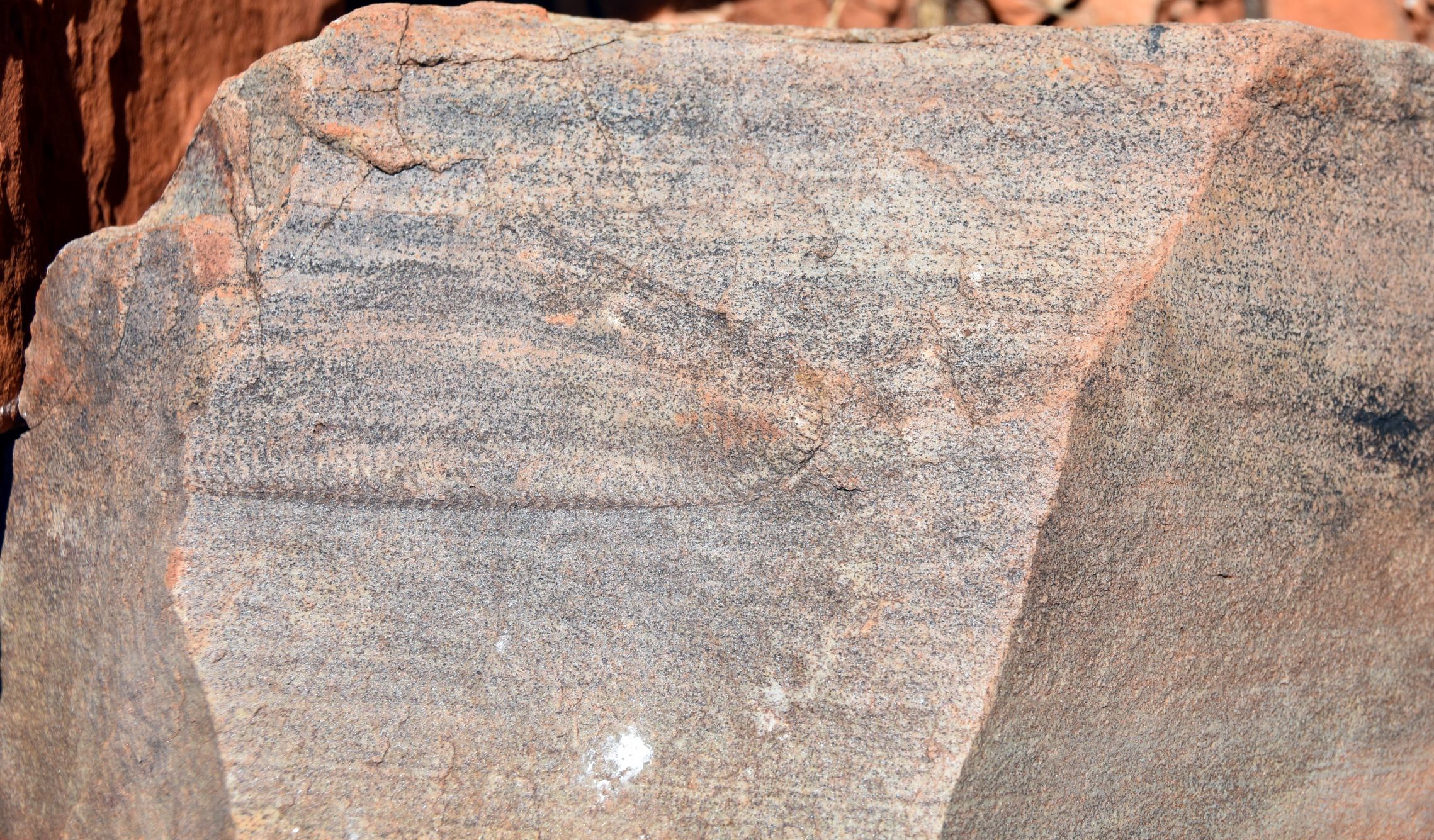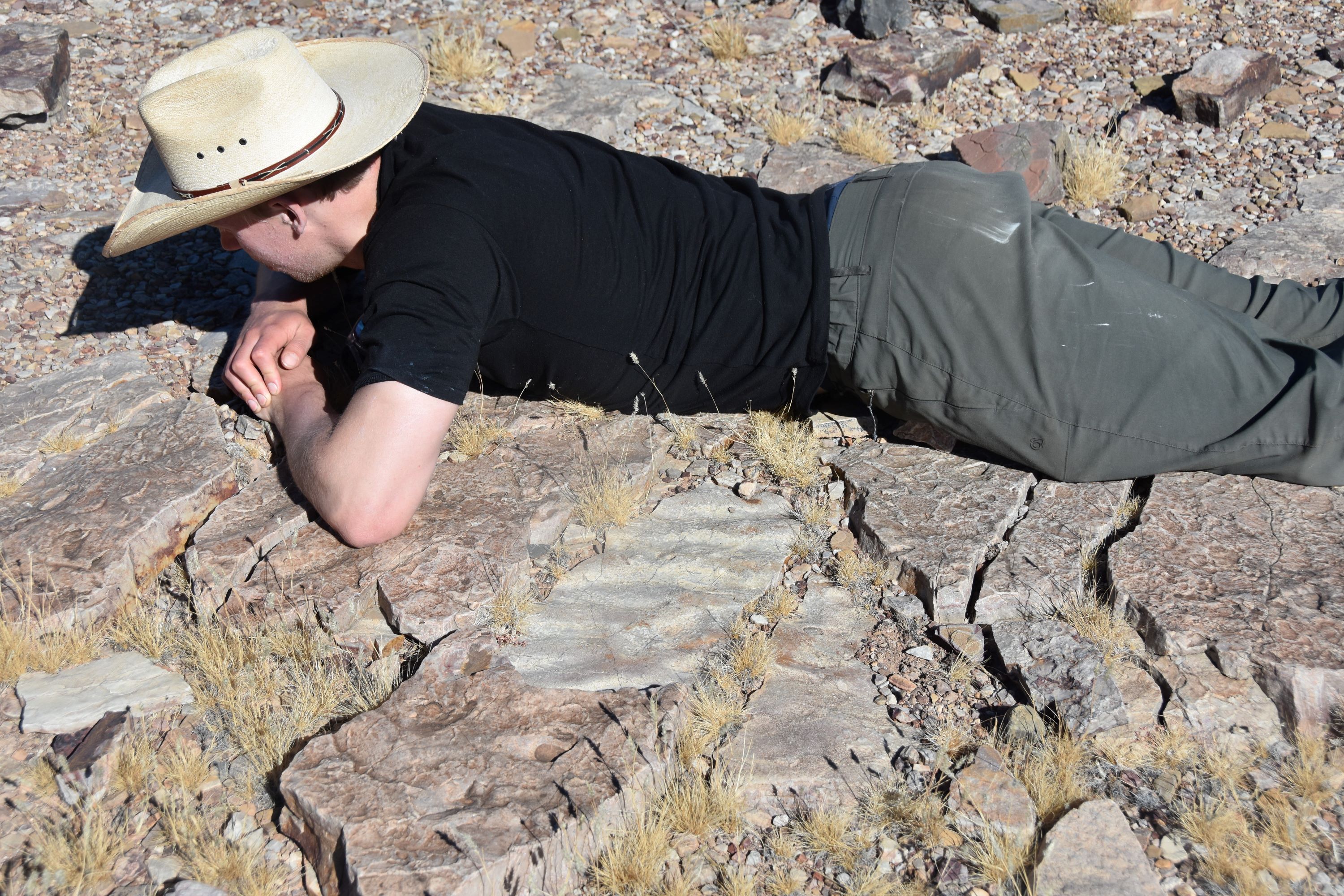The Ediacaran biota pose a riddle that scientists have grappled with for decades. Found in three distinct biotic assemblages – the Avalon (575–560 million years ago; Ma), White Sea (560–550 Ma), and Nama (550–539 Ma) – these peculiar Ediacaran organisms may hold the key to unlocking the secrets of early animal evolution. Conventional studies tie diversity and ecological changes across these assemblages to biological radiation and extinction events. Can a closer look at the preserved paleo-environments that contain the fossils, using our sedimentology and stratigraphy toolkit, offer a fresh perspective?
On the slippery coastline of Newfoundland, Canada, the Avalon Assemblage provides a window into the dawn of macroscopic animal life. Picture an ancient seaway. Shallow-water deltaic environments were seemingly barren, whereas the depths of the sea hosted macro-organisms on top of turbidite event beds. Organisms established communities on the ancient seafloor only to be episodically smothered by volcanic eruptions.
In Australia and Russia, the White Sea Assemblage reveals a spectacular rise in biological diversity. Here we see a shift of organisms to shallower water environments, with some unfortunate individuals meeting their end as they were smothered by storm-mobilized sand. In Namibia, the youngest Nama Assemblage marks a curious decline in biological diversity. Some researchers believe this decline archives Earth’s first major ‘mass extinction’ event, potentially triggered by anoxia in the ancient Ediacaran oceans.
Traditionally, we’ve viewed the Avalon, White Sea, and Nama assemblages through the lens of biological change. But what if some answers lie in the paleo-environments? At Cambridge, researchers Alex Liu, William McMahon, and I have embarked on a global adventure, using a sedimentologic-stratigraphic approach to reconstruct the paleo-environmental context of key Ediacaran sites. Our quest aims to uncover potential paleo-environmental controls on Ediacaran macrobiota, and challenges the assumption that shifts in Ediacaran diversity and community structure are solely biological.


Preliminary findings from our global expedition suggest a broad overlap in paleo-environments between key sites. Deltaic, shoreface, and offshore shelf environments are represented in all studied locations, providing a common thread across the Avalon, White Sea, and Nama assemblages.
Yet, subtle differences between sites may hold the key to understanding Ediacaran ecological communities. For instance, the Avalon Assemblage boasts an extensive delta system, hundreds of metres thick, overlying fossiliferous turbidites. Evidence points to a delta system with an enormous sediment supply. Avalonian shallow water environments, consistently battered by sediment with only short-lived breaks, appear inhospitable. The tops of deeper turbidite units potentially served as the only environments exposed long enough for organisms to establish and flourish.


The Avalon’s extensive delta system contrasts with smaller-scale deltas in the White Sea and Nama. These small deltas had a lower sediment supply, with potential for long breaks in sedimentation for creatures to establish communities on the seafloor. Could subtle paleo-environmental variables shift our perception of early animal evolution? For example, maybe the broad trend of organisms moving from deep to shallow water between the Avalon and White Sea Assemblage does not represent true biological change – maybe the organisms simply inhabit sediment starved environments at each location.

What happens between the White Sea and the Nama assemblage? Is there a genuine shift in ecology and does this transition truly record Earth’s first ‘mass extinction’? Our investigation reveals that paleo-environments in each site are directly comparable. At first glance, it could then be argued that all changes between the two assemblages represent entirely biological change. A closer look at the Nama Assemblage, however, reveals an exciting new finding. Nearly all organisms are transported in sediment gravity flows (debris flows, transitional and turbidity flows), sometimes far away from home. Are transported beds true representations of Nama assemblage ecological communities and diversity? Who knows… we are currently searching for non-transported examples to answer this question.
Variation in community composition, ecosystem maturity, taxonomic diversity, and organism size could well be partly controlled by paleo-environmental variables rather than traditional notions of biological change. Our exploration and analyses hint that paleo-environmental controls are an underappreciated and potentially critical variable in the mystery of the Ediacaran Biota. The answers to questions are still emerging and promise to shed light on the dynamic changes in animal evolution during the Ediacaran Period. Stay tuned!
Article originally published in the 2024 issue of GeoCam magazine.


